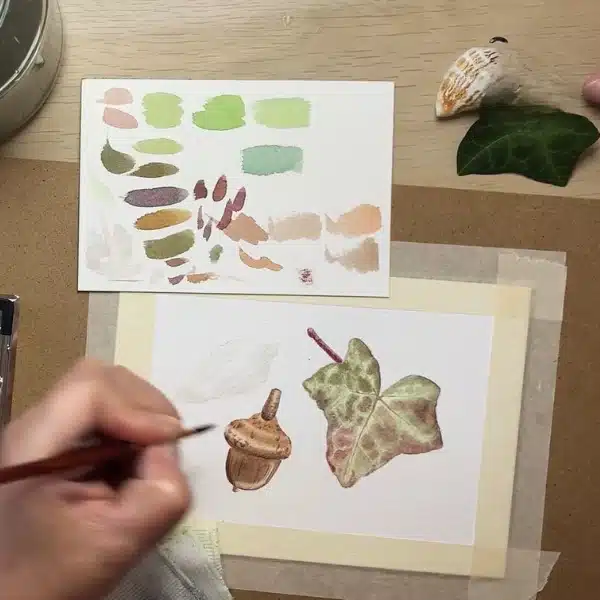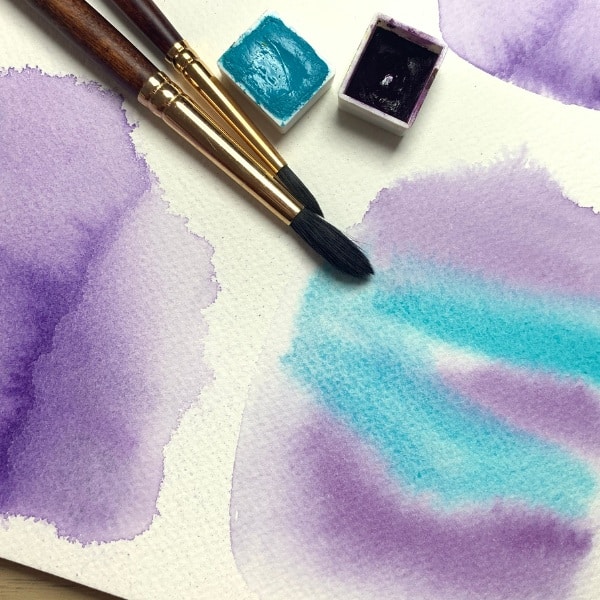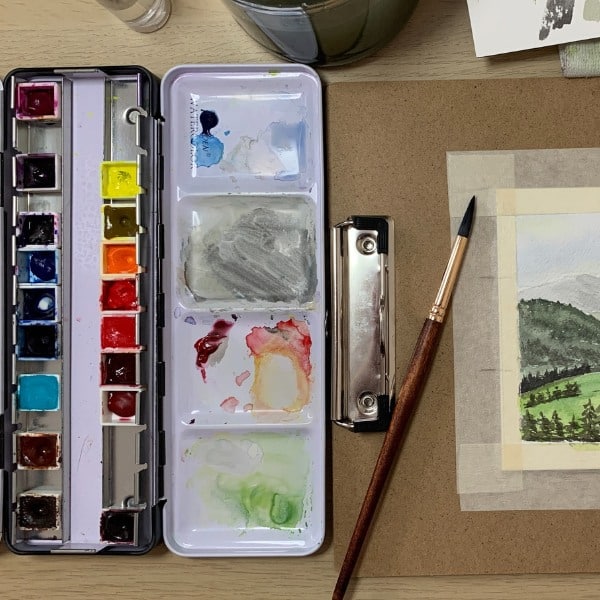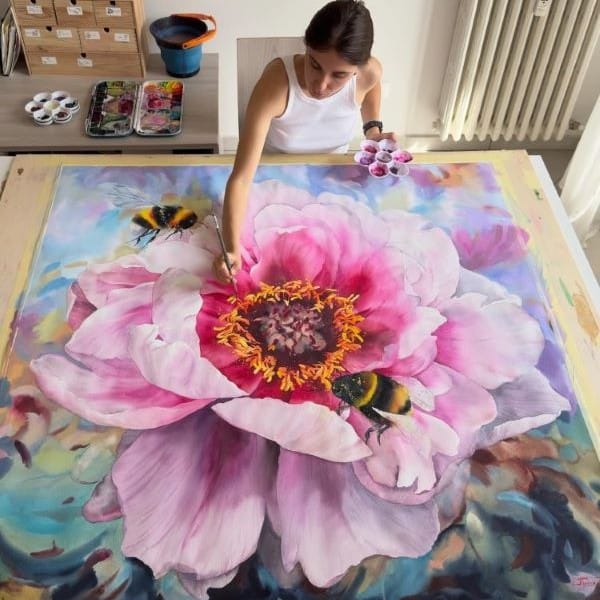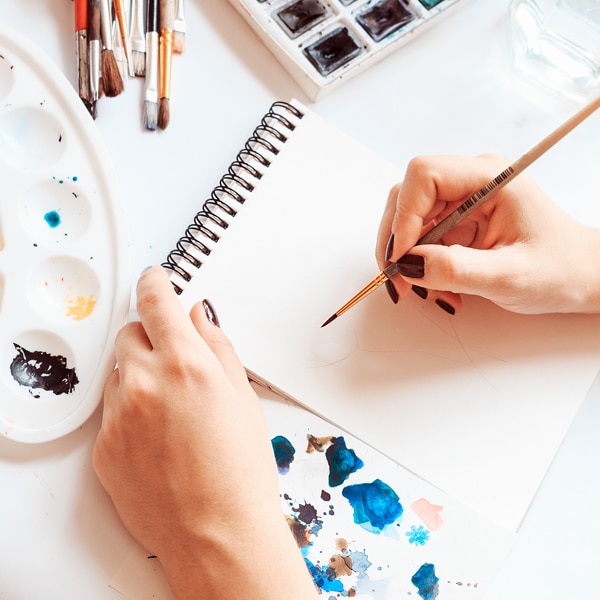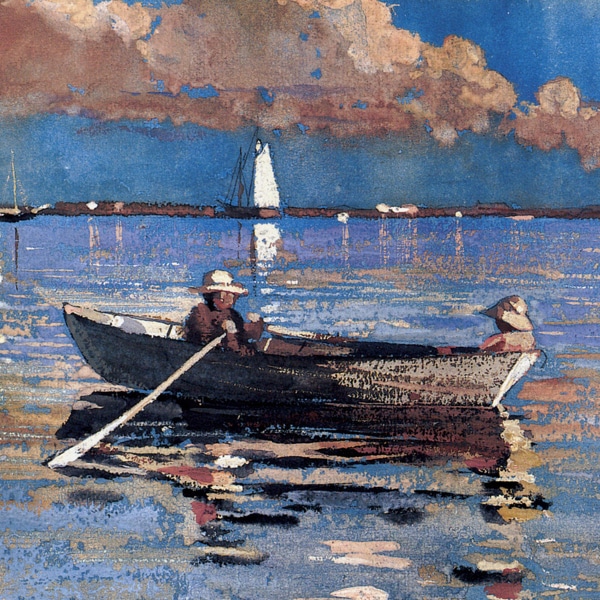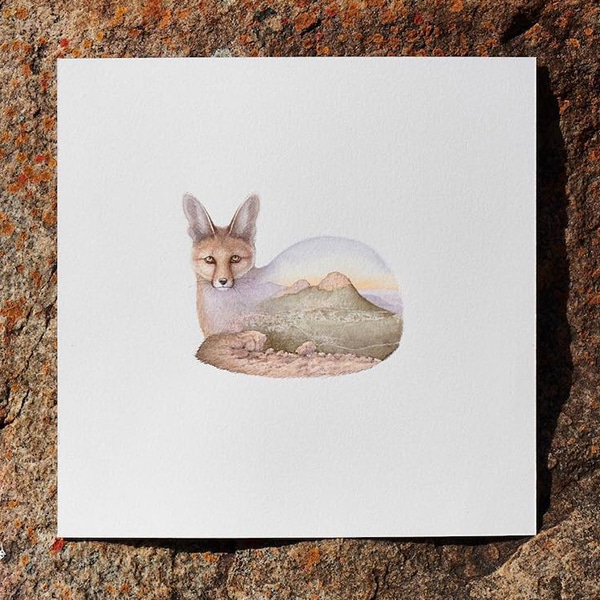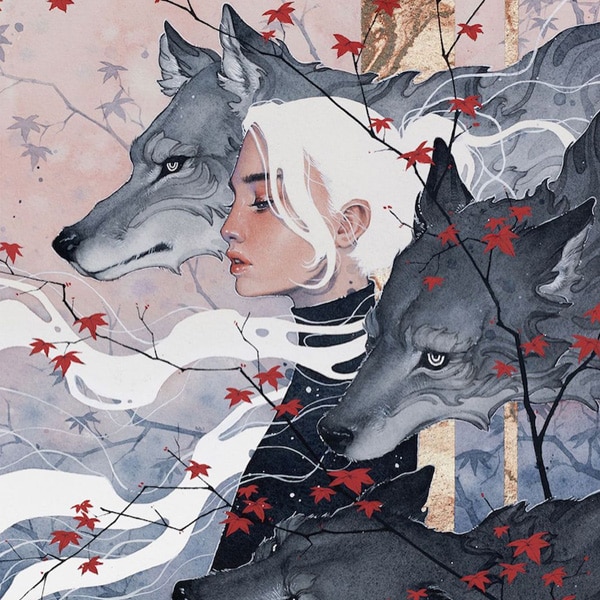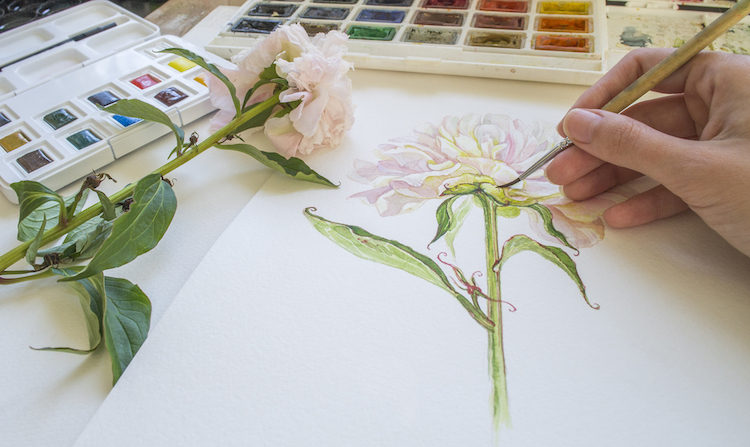
Photo: Stock Photos from Svitlyk/Shutterstock
This post may contain affiliate links. If you make a purchase, My Modern Met may earn an affiliate commission. Please read our disclosure for more info.
There are many reasons why watercolor paint is one of the most popular and beloved mediums. Its delicate transparency, ability to blend and layer, and affordability make it an ideal coloring choice for artists of every skill level.
If you're new to watercolors, however, the fluidity of the medium can seem a bit daunting–especially in comparison to dry media like colored pencils and pastels. To help you begin your journey into watercolor painting, we've put together a list of ten essential watercolor tips. They will advise you on supplies, techniques, and how to plan your projects.
Want to create some watercolor paintings? Then be sure to read these essential tips before you get started!
View this post on Instagram
Choose the right paper
Watercolor painting depends on mixing dry pans or tubes of paint with certain amounts of water. Because of this, you need specific types of paper that can withstand the watery application of paint without warping. Most of these are labeled as watercolor paper and are noticeably thicker than their dry media counterparts. This thickness allows the paper to absorb the watercolor washes without bending or curling. Generally speaking, you will want to use watercolor paper that is at least 140 lb (or 300 gsm) for your painting, like Canson XL Watercolor Pads.
Aside from the thickness, you will also want to pay attention to the texture of the paper. Hot-press paper has a smooth, hard surface that makes it ideal for fine detail work, but it's often criticized as being slippery and challenging to control. Cold-press has a semi-rough surface that’s suitable for detail work and washes, but you can see some of the texture peeking through. Rough paper is exactly that—it has a rigid texture. Because of this, it’s great if you enjoy creating washes of color. The texture allows the pigment extra drying time.
Pick the right brushes… and then take care of them
While it's not necessary to have a large variety of brushes, it is important to choose the right ones for what you want to do. A round brush, for example, has a rounded tip that is ideal for smaller or detailed media. On the other hand, filbert brushes feature a wide flat tip that is better for blending paint pigments.
Additionally, once you have your collection of brushes, it's important to take care of them. Fortunately, taking care of watercolor brushes is relatively low-maintenance compared to oil-based media. All you'll need to do is wash the brushes with mild soap and warm water until all of the paint is gone and the water runs clear. Afterward, use your fingers to gently mold the tip of the brush back in place and let it dry.
View this post on Instagram
Keep paper towels handy
Like most creative mediums, watercolor painting can be messy. That is why it's always better to be prepared for accidents. Paper towels are a handy tool to save you from spills or to blot extra water that has spread on the paper. In addition, your average Q-tip can help you clean up some of the finer sections of your painting.
Experiment with the amount of water
Understanding the right amount of water needed to mix with your paints is something that will come with repetition and practice. As you continue to paint, you'll find that too much water will dilute the pigments and cause the paint to spread further on the paper, whereas too little water will result in thick pasty colors that don't flow as watercolors should. The right amount is somewhere in the middle, where the color retains its vibrant transparency.
View this post on Instagram
Plan your white sections
Because watercolor is so fluid, it's important to plan your white sections in advance. For instance, if you want a nice, clean white border around your painting, consider placing masking tape around the edges of the paper before you get started.
Or, if you want to keep small sections of the painting itself paint-free, like clouds, try using masking fluid to cover those areas.
Mix more paint than you plan on using
Watercolor paint dries fast, so in order to avoid streaky brushstrokes, you need to apply and consistently blend the paint. For example, you don't want to be in the middle of coloring a large sky only to find that you've run out of paint. Not only does mixing take a lot of time, but it will be hard to blend the dry layer with a new wet one. So, to avoid those kinds of situations, make sure you always mix more paint than you intend on using.
View this post on Instagram
Always test your swatches
Sometimes the color that looks good on the palette looks very different on paper. To avoid making the wrong color choice, be sure to test all of your pigments on some scrap paper first.
Work from light to dark
In watercolor, it is very important to always work from light to dark. This requires some patience and planning, but it will ultimately produce the best results. It's very easy to build up too much color and forget to preserve the lighter sections.
Try different techniques
Watercolor offers numerous possibilities for blending, creating texture, and rendering interesting effects. Some of the most common watercolor techniques include flat washes, gradients, spattering, dry brush, wet-on-wet, and wet-on-dry. While you can certainly start painting without knowing these techniques, some of them can make your painting process a lot easier and even more fun.
Go with the flow
The last essential tip for watercolor painting is to remember to go with the flow. While there are techniques you can learn and master, it's also good to keep in mind that because watercolor paint is water-based, you can't control everything that will happen—and that's okay. Small mistakes are fairly easy to cover up with blending and mixing, and sometimes they can even add to the beauty of your art.
View this post on Instagram
Looking for others who love watercolor painting? Join our Art, Design, Photography, and Drawing Club on Facebook!
Related Articles:
Start Painting With the Most Popular Types of Brushes and Learn To Make Them Last
4 Color Theory Exercises That Are an Easy Way To Improve Your Painting Skills
60+ Painting Ideas That Will Inspire You to Pick Up a Brush Right Now











































































